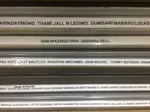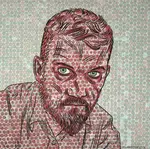Qwaa Mangana
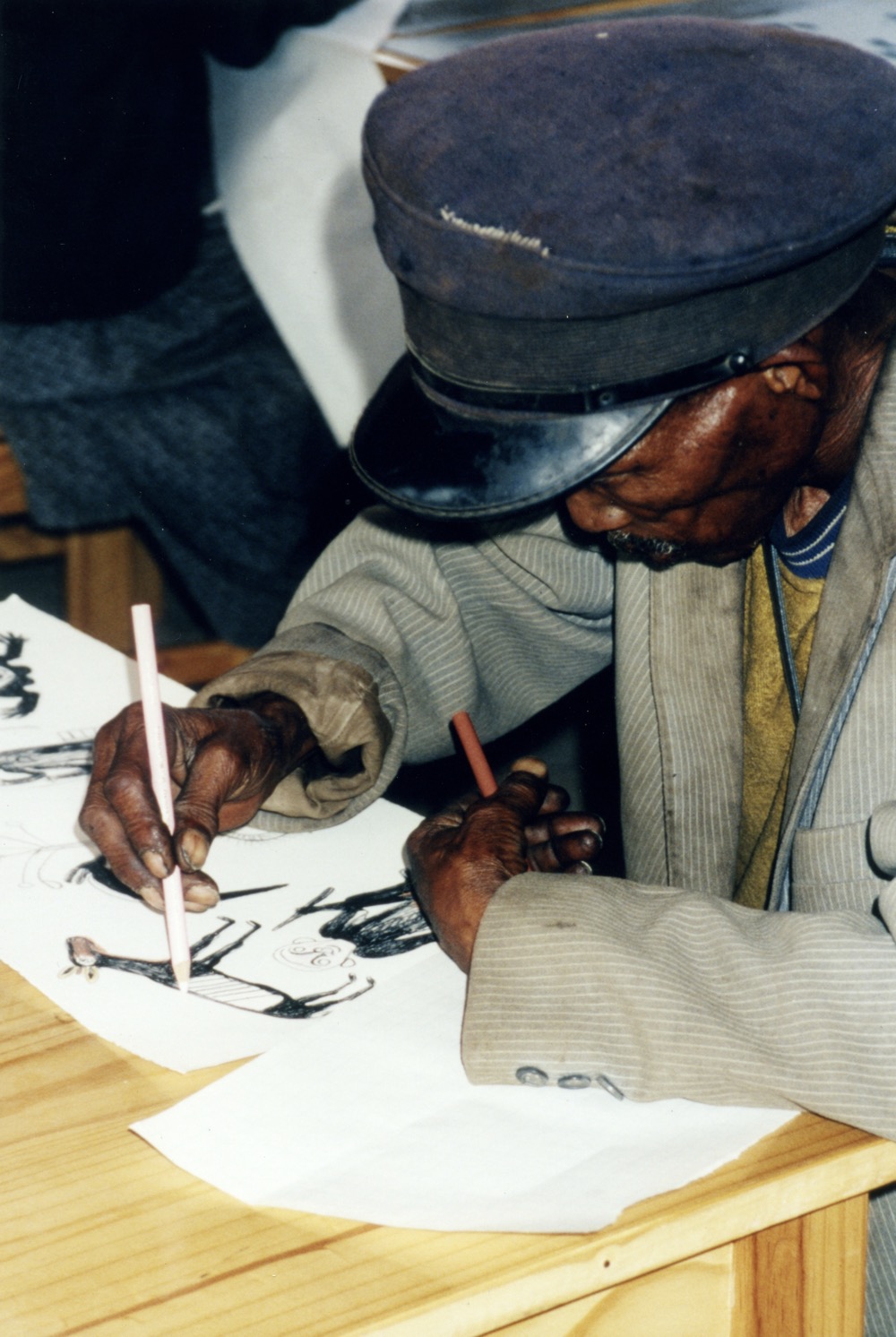
Qwaa Mangana was born in the 1920's on the farm Sandspruit near D'kar (Botswana), he passed away in the mid 1990's. Qwaa spent his childhood in the traditional style of his hunter-gatherer parents. He received no formal schooling, but learnt the art of hunting with a bow and arrow and tracking animals. As an adult he worked as a lime-digger; cattle herder - trekking cattle across the Kalahari for various farmers; and as a labourer (carrying, sifting and washing sand) for an English prospector. Additionally he taught himself to make and repair saddles, shoes and other leatherwork items. It was his elegant sense of design evident in these products and his style of dress, which first caught the art project coordinators eye, which led to him being one of the first to join The Kuru Art Project.
Mangana's favorite subject matter was animals, although from his very first drawing he depicted half-human figures (lietrally without a lower body) with round staring eyes, which he described as the equivalent of "Satan". Some of Qwaa's figures reflect the anthropomorphic figures of earlier San art, such as the ostrich lady who makes an appearance on one of the pages of the Qauqaua book. Qwaa was also a healer during trance dances.
Archive of Work Printed at The Artists' Press
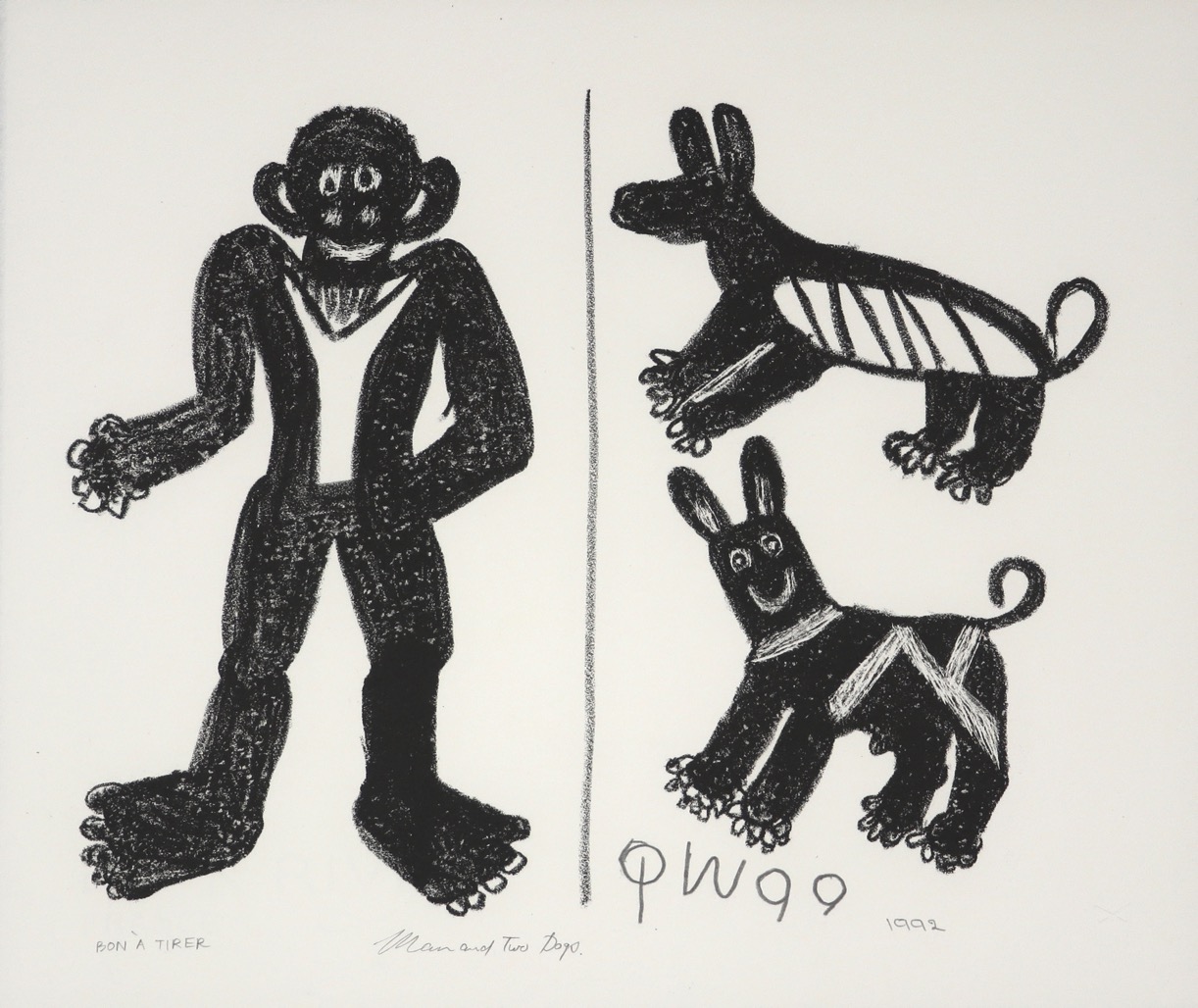
Title: Man and Two Dogs
Medium: Single colour lithograph
Paper size: 25 x 30 cm
Edition size: 80
Date: 1992
Published by The Kuru Art Project
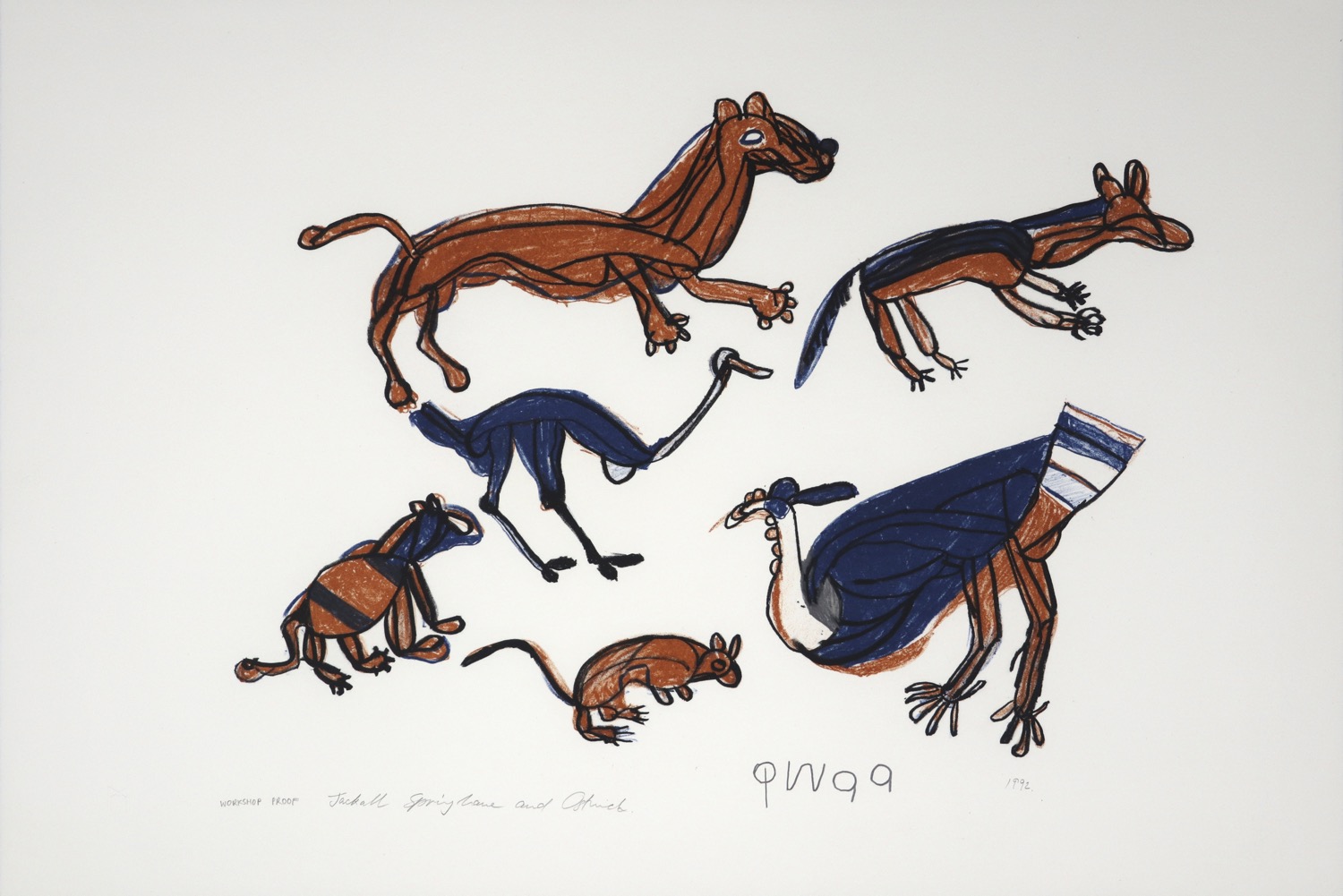
Title: Jackal, Springhare and Ostrich
Medium: Three colour lithograph
Paper size: 38 x 56 cm
Edition size: 55
Date: 1992
Published by The Kuru Art Project
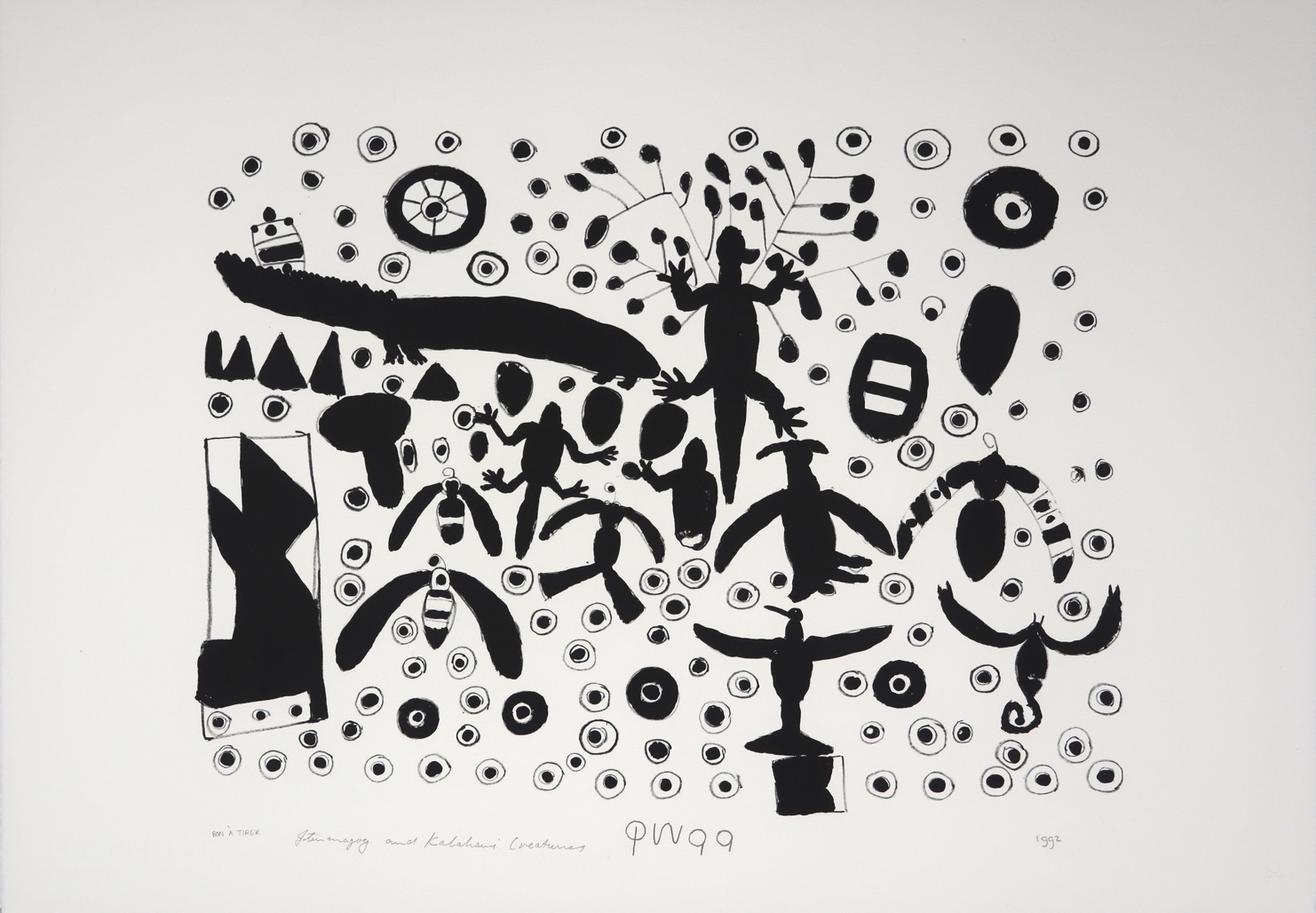
Title: Ietermagog and Kalahari Creatures
Medium: Single colour lithograph
Paper size: 46 x 66 cm
Edition size: 10
Date: 1992
Published by The Kuru Art Project
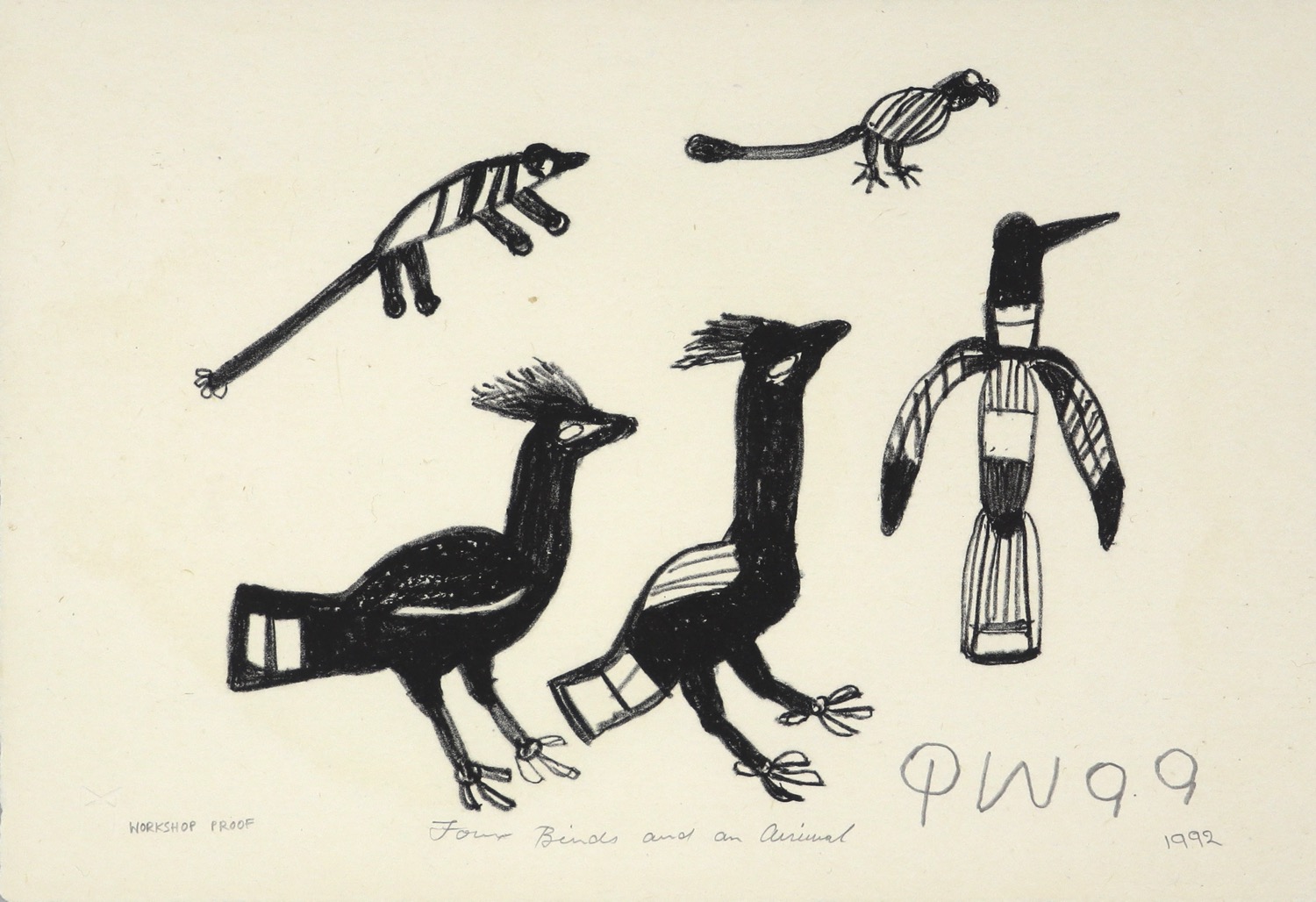
Title: Four Birds and an Animal
Medium: Single colour lithograph
Paper size: 21 x 30 cm
Edition size: 40
Date: 1992
Published by The Kuru Art Project
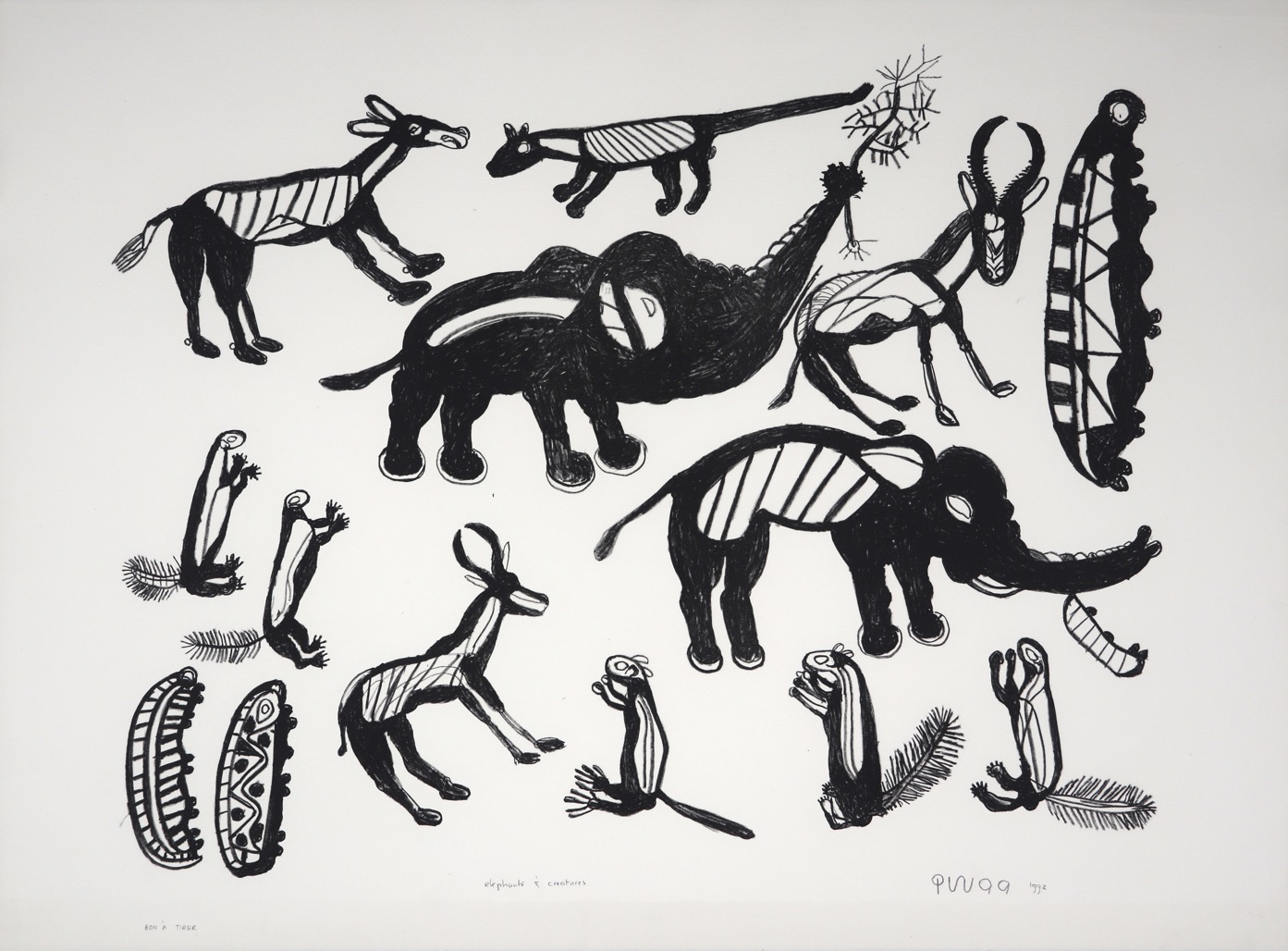
Title: Elephants and Creatures
Medium: Single colour lithograph
Paper size: 56 x 76 cm
Edition size: 60
Date: 1992
Published by The Kuru Art Project

